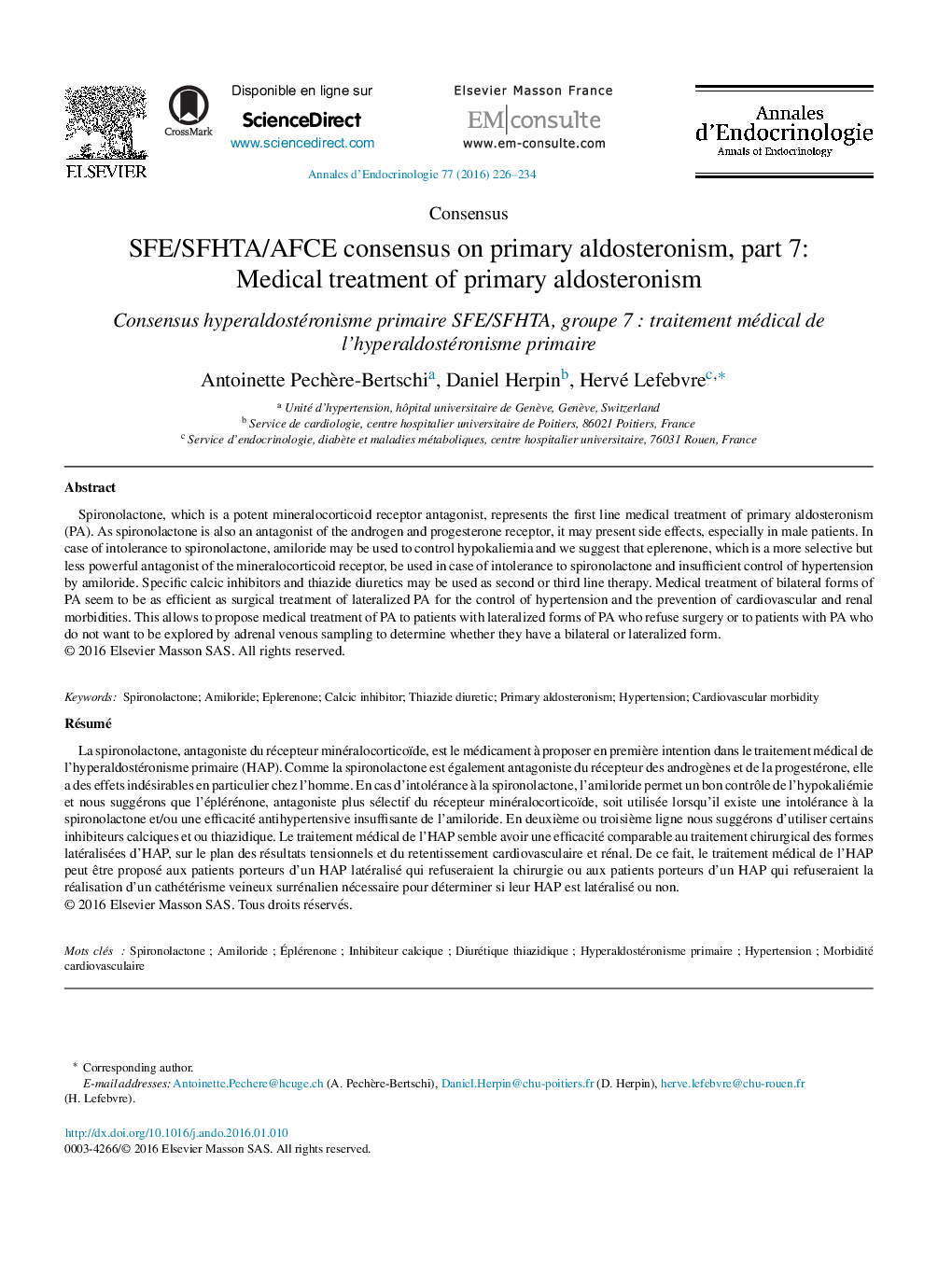| Article ID | Journal | Published Year | Pages | File Type |
|---|---|---|---|---|
| 6085784 | Annales d'Endocrinologie | 2016 | 9 Pages |
Spironolactone, which is a potent mineralocorticoid receptor antagonist, represents the first line medical treatment of primary aldosteronism (PA). As spironolactone is also an antagonist of the androgen and progesterone receptor, it may present side effects, especially in male patients. In case of intolerance to spironolactone, amiloride may be used to control hypokaliemia and we suggest that eplerenone, which is a more selective but less powerful antagonist of the mineralocorticoid receptor, be used in case of intolerance to spironolactone and insufficient control of hypertension by amiloride. Specific calcic inhibitors and thiazide diuretics may be used as second or third line therapy. Medical treatment of bilateral forms of PA seem to be as efficient as surgical treatment of lateralized PA for the control of hypertension and the prevention of cardiovascular and renal morbidities. This allows to propose medical treatment of PA to patients with lateralized forms of PA who refuse surgery or to patients with PA who do not want to be explored by adrenal venous sampling to determine whether they have a bilateral or lateralized form.
RésuméLa spironolactone, antagoniste du récepteur minéralocorticoïde, est le médicament à proposer en première intention dans le traitement médical de l'hyperaldostéronisme primaire (HAP). Comme la spironolactone est également antagoniste du récepteur des androgènes et de la progestérone, elle a des effets indésirables en particulier chez l'homme. En cas d'intolérance à la spironolactone, l'amiloride permet un bon contrôle de l'hypokaliémie et nous suggérons que l'éplérénone, antagoniste plus sélectif du récepteur minéralocorticoïde, soit utilisée lorsqu'il existe une intolérance à la spironolactone et/ou une efficacité antihypertensive insuffisante de l'amiloride. En deuxième ou troisième ligne nous suggérons d'utiliser certains inhibiteurs calciques et ou thiazidique. Le traitement médical de l'HAP semble avoir une efficacité comparable au traitement chirurgical des formes latéralisées d'HAP, sur le plan des résultats tensionnels et du retentissement cardiovasculaire et rénal. De ce fait, le traitement médical de l'HAP peut être proposé aux patients porteurs d'un HAP latéralisé qui refuseraient la chirurgie ou aux patients porteurs d'un HAP qui refuseraient la réalisation d'un cathétérisme veineux surrénalien nécessaire pour déterminer si leur HAP est latéralisé ou non.
